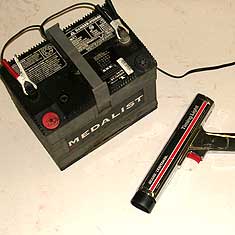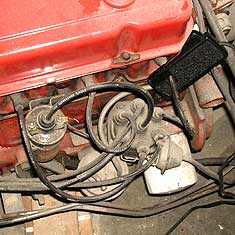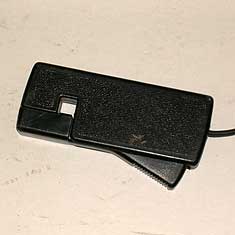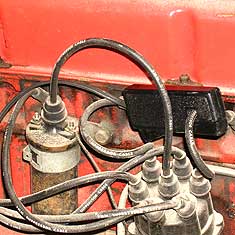| 
There’s more to timing lights too. In truth, many enthusiasts
(and believe it or not, that includes many of us in the high
performance community) hook up timing lights incorrectly.
It sounds bizarre but it isn't. Often, a convoluted header
configuration coupled with a tight engine compartment will
only allow one easy light installation. Trouble is, that installation
might not be correct. If the timing light is setup incorrectly,
the timing marks you are watching could be a mile (and more
than a few degrees) off. According to MSD, when setting up
your timing light, there are several things to consider:
• Be absolutely certain that the positive and negative
clips are correctly attached to the battery or power source.
Never use the coil as a source of power! Be certain that the
pair of timing light power cables is not in contact or close
to any of the spark plug wires.
• When connecting the trigger clamp to the number one
cylinder, be absolutely positive that the clamp does not come
in contact with any other spark plug wires. If contact is
made or if the trigger is close to any other wires, there
is a good chance that a false triggering will occur. Additionally,
it is always a good idea to further separate the number one
cylinder wire lead from any other cylinder wires. Stray signals
or spark crossover will not influence the timing light if
this practice is always followed.
• Some timing lights require the trigger clamp to be
mounted in a specific direction on the spark plug wire. Be
absolutely positive that your clamp is mounted with the jaws
pointing in the proper direction. In the event that the clamp
is installed upside down (and it's very easy to do), the timing
will appear retarded.
As you can easily see, there's much more to timing lights
than simply hooking up the power cables and clamping the inductive
pickup over number one cylinder. Who knows, there's a chance
you could find some serious power lurking in your engine.
And only because you were fooled by a faulty timing light.

Both timing light power cables
should be affixed to the battery. In the event that your
car has a trunk mount battery or pair of batteries, add
a power junction block to an accessible location in the
engine compartment. Never use the coil as a source of
timing light power.
|

Number One ignition wire must
be well separated from the other wires on the engine.
Spark cross over from other wires can easily influence
timing light performance. |

Be positive that the inductive
pickup clamp is correctly oriented. Virtually all timing
light clamps have arrows or instructions which indicate
the proper orientation. If the clamp is installed backward,
then the engine timing will appear retarded.
|

Never allow the trigger clamp
to come in contact with any of the other spark plug wires.
If the trigger clamp or the wire that connects to the
clamp are close to spark plug wires other than number
one, they can influence the timing. Similarly, the power
wires can pickup false signals if they run too close to
the primary ignition wires. |
| SOURCE |
Autotronic Controls Corp. (MSD)
1490 Henry Brennan Drive
El Paso, TX 79936
PH# 915-857-5200 |
|

